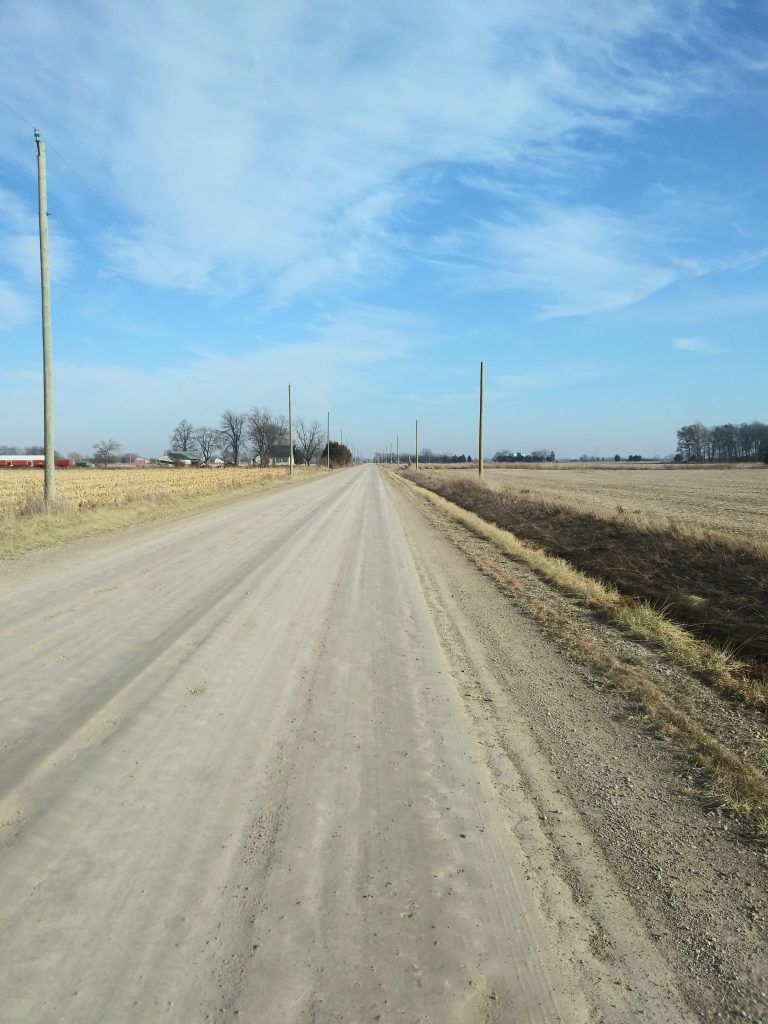Winter in the banana belt of Ontario (around the 42nd parallel) tends to be disappointing to those who enjoy cross country skiing, snowshoeing or snowmobiling out their back door. Ice skating on natural ponds or outdoor rinks in backyards is hit or miss. Even fat bikers with visions of rolling through acres of snowy local trails have to moderate their expectations for local bike rides.
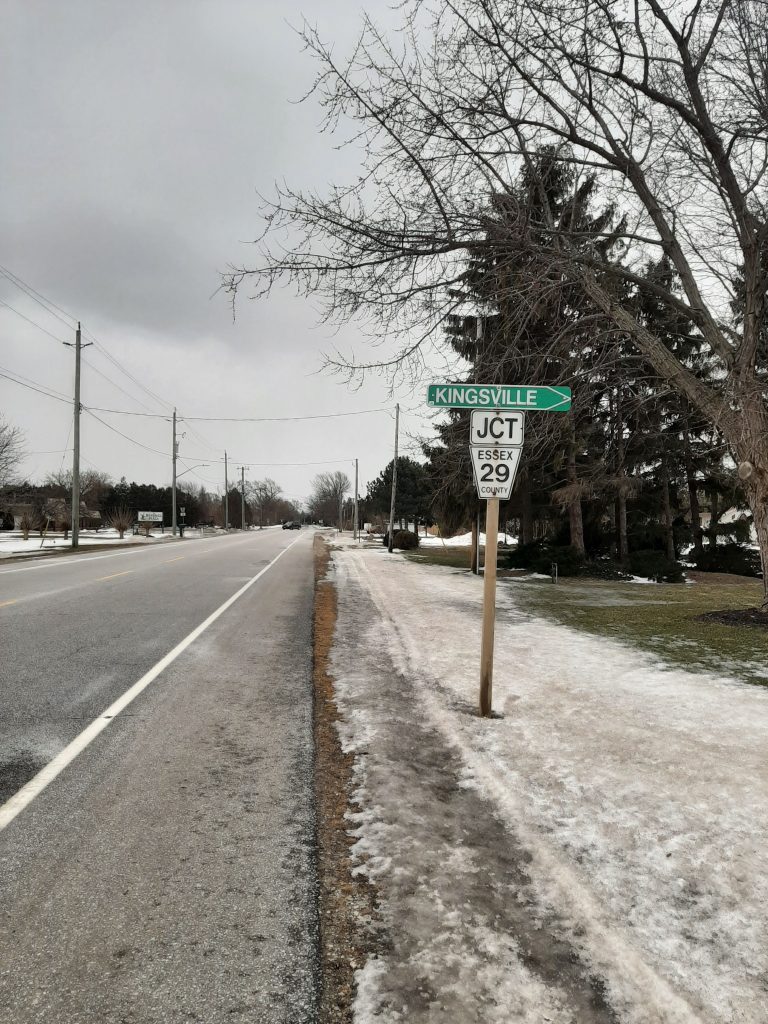
But what we do have here in the (relative) tropics of Ontario is the opportunity to ride outside with less hassle than those living even a couple hours up the 401. Yes, we have many grey, cloudy days. And yes, rain or drizzle and mild temperatures can make non-paved surfaces messy (please don’t ride on the Greenway or other dirt trails when your tires are making even the smallest ruts!). But “winter” rides on dry local pavement or on dry/frozen gravel roads can usually happen several times through December, January and February.
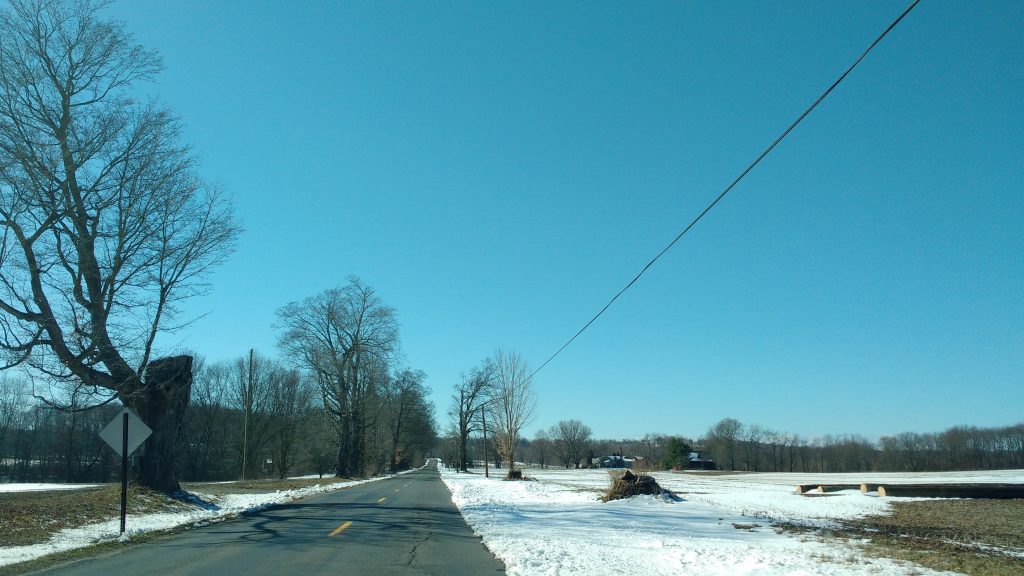
Getting outside for some exercise, even in the winter, does more than burn calories. There are mental health benefits from skiing, walking, and of course, cycling in the winter. Mentally, it seems easier to get out the door and go for a ride on a sunny day (even if it is a few degrees below freezing). But even a ride outside on a relatively mild, yet cloudy, day can boost one’s mood.
Riding outside in many of our “winter” conditions in this area of southwestern Ontario usually doesn’t require adding more cycling gear to your closet. Blocking the wind is the one of the biggest differences between summer and winter riding gear.
- For your feet, using flat pedals and wearing hiking boots or winter boots with room for warm socks helps keep your feet warm. Chemical toe warmers are a good option for extra comfort. For dedicated clip-in riders, a slightly bigger shoe size will allow for thicker socks and insulated insoles. Even putting a sandwich bag over the toe area of your socks before putting your shoes on can help keep your feet a bit warmer.
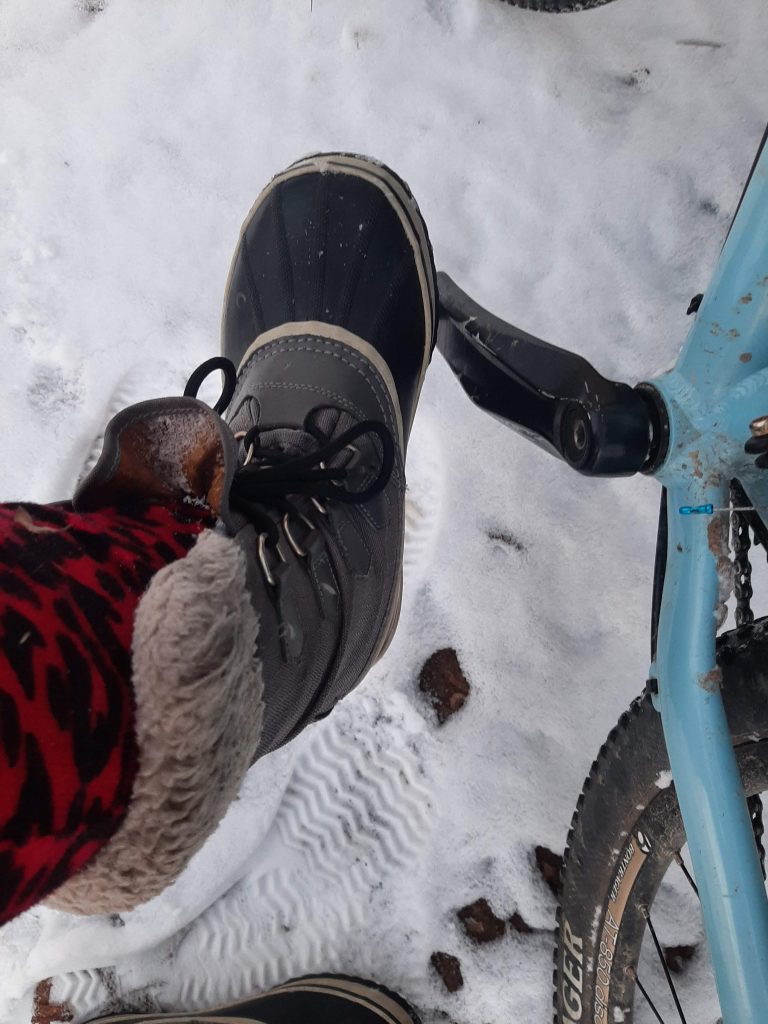
- Long underwear or leggings under a pair of comfortable track pants can help keep your legs warm. Adding even the most basic wind pants is the ultimate way to cheat the wind’s chilly blasts (you will create more of your own windchill while riding than when walking).
- Wearing a few thinner layers on your torso is usually better than wearing a single heavy winter coat. You might get warmer than you expect with the exercise, and unzipping a layer or two if needed can make you more comfortable. Dig out a “summer” windbreaker jacket from the back of the closet to use as the outer layer .
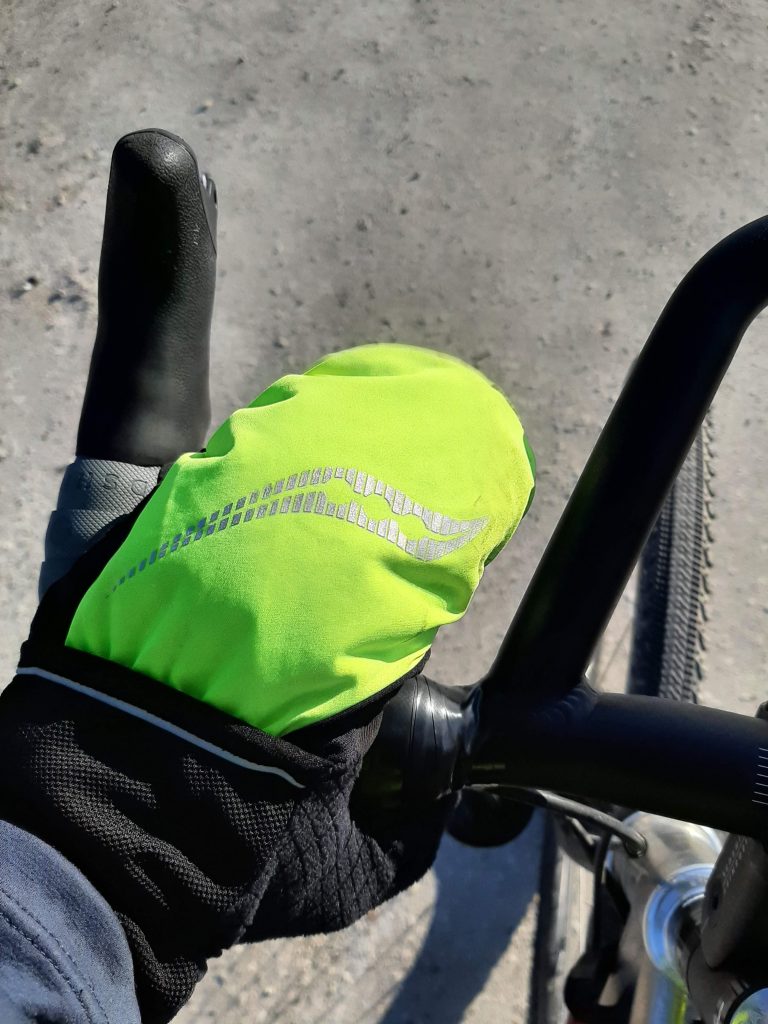
- Keeping your hands warm is probably the biggest challenge. Leather (fake or real) gloves with room for a thin pair of knit gloves inside block the wind. Depending on your handlebar set up, mittens may be an option. Pogies on your handlebars are the ultimate way to keep your hands warm during cold weather riding, if you are looking to push the limits of cold temperature riding.
- For your head, a Buff or short scarf will protect your neck, chin and lower face from the windchill factor as you ride through town. A light toque or beanie that covers your ears will fit under your helmet and keep your head warm. Some may find even a headband over their ears sufficient. Sunglasses on sunny days or clear safety glasses on cloudy days may also help with rider comfort.
Watch the weather forecast, and be ready to ride outside the next time there is sun, light winds and moderate temperatures in our “winter” weather forecast!
